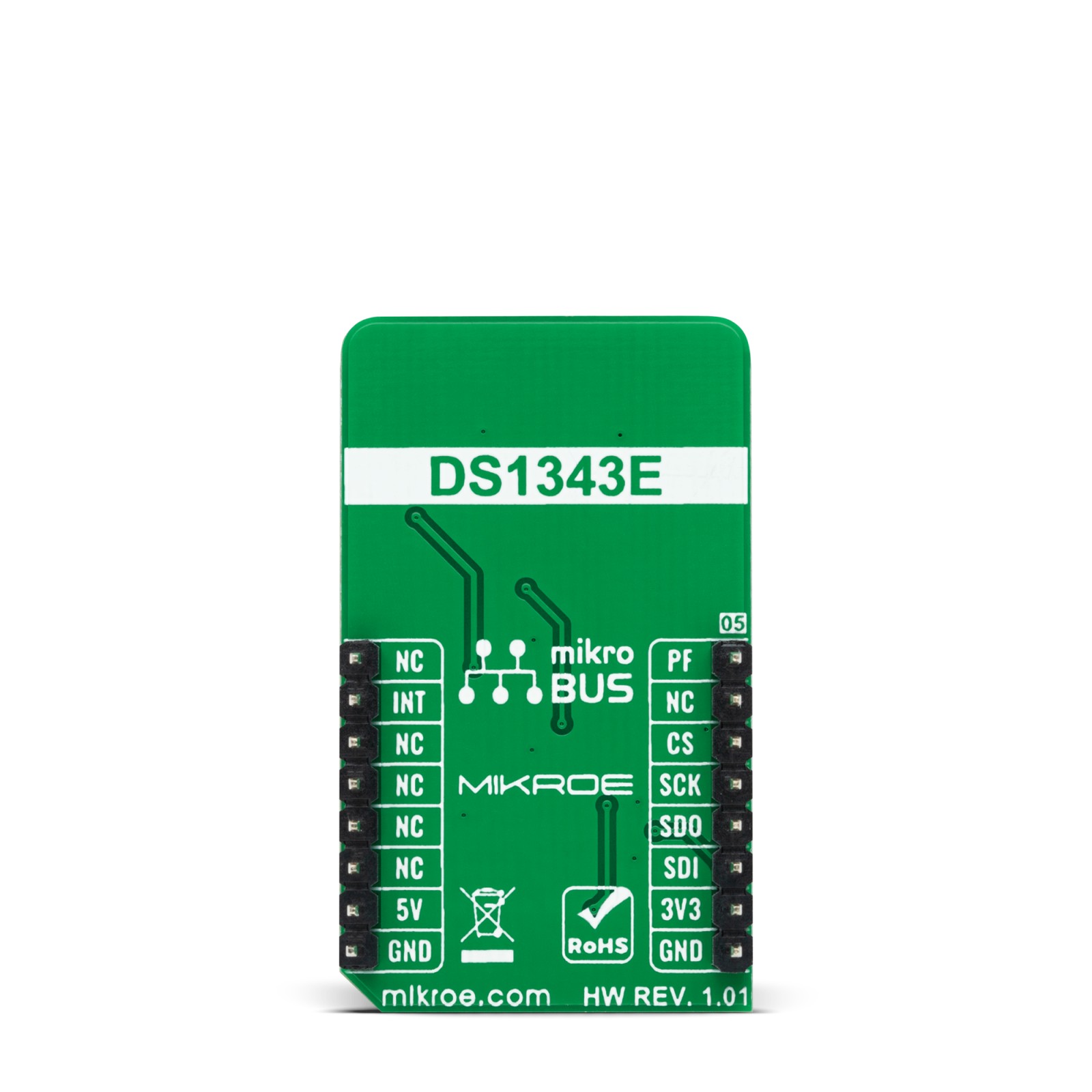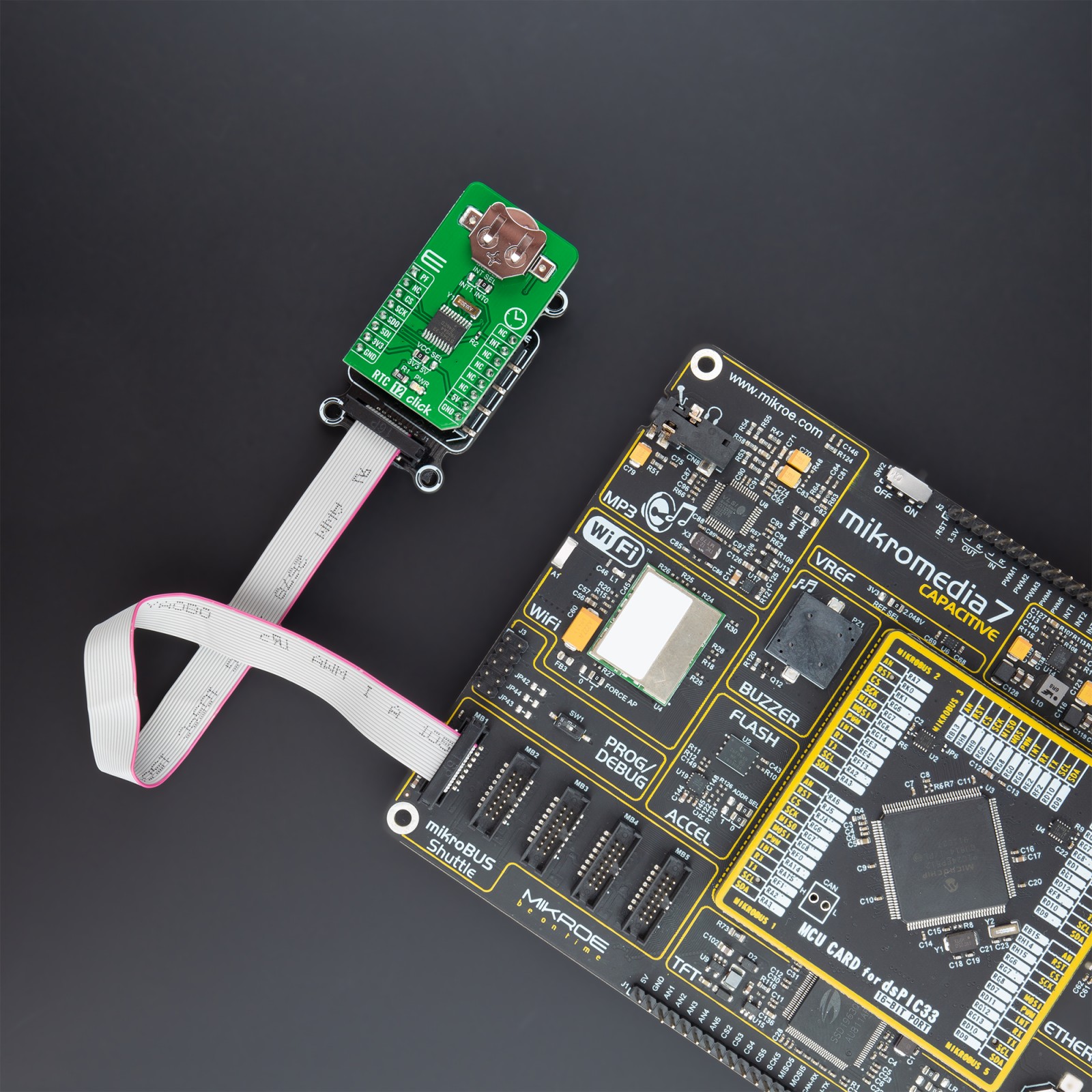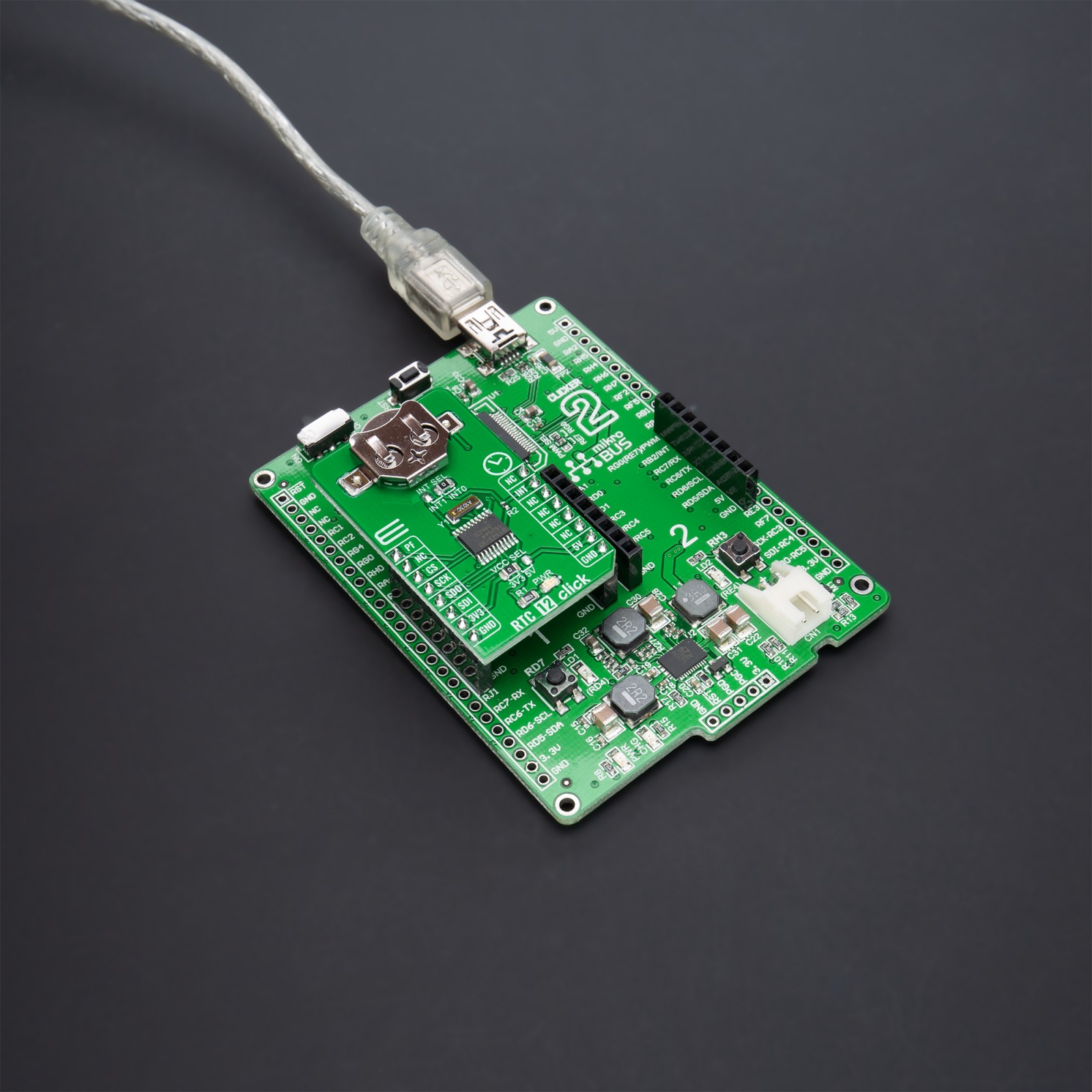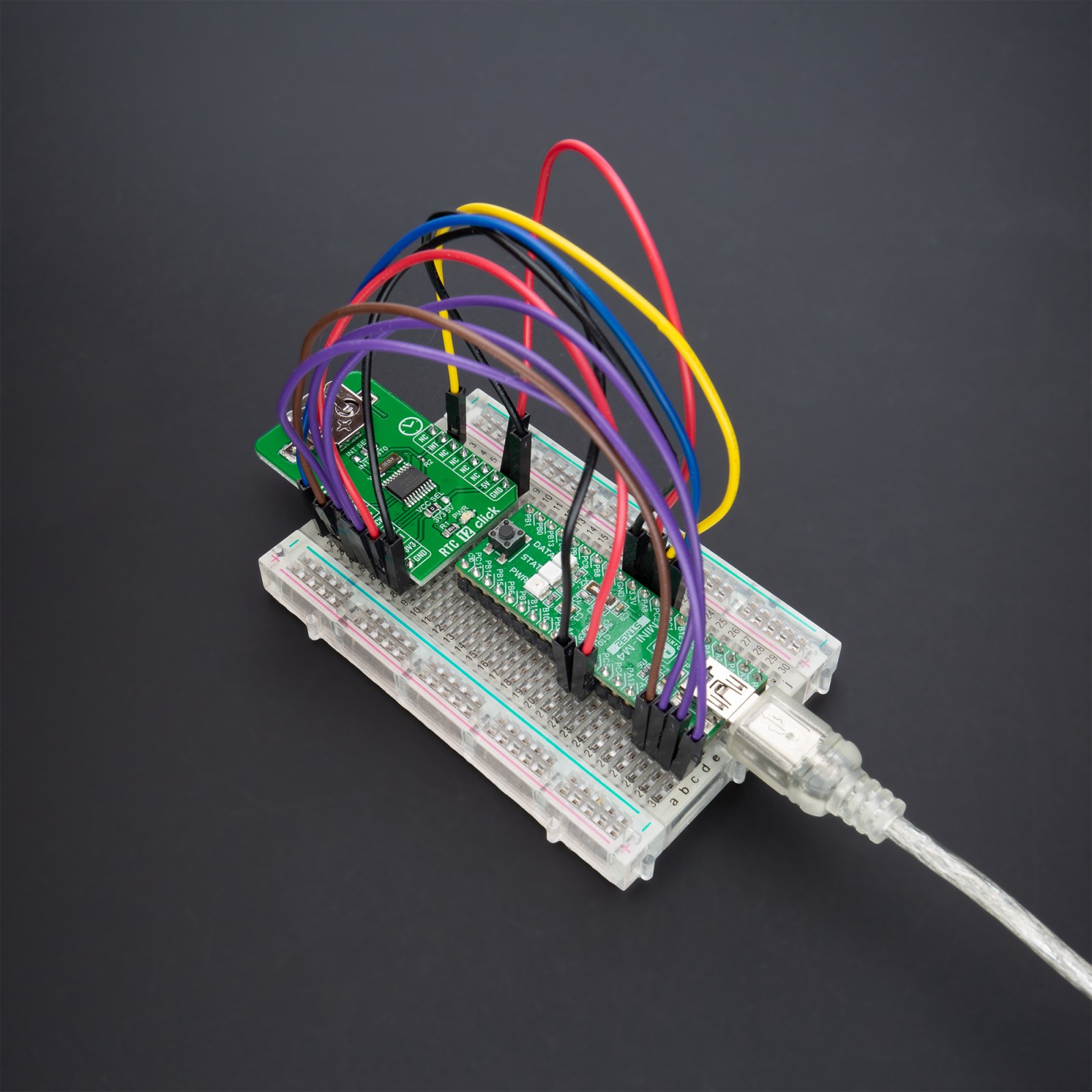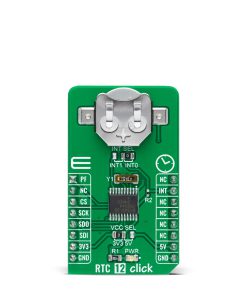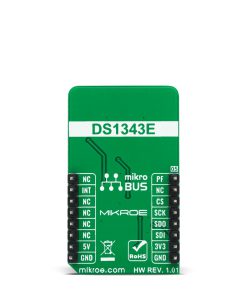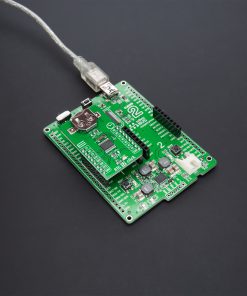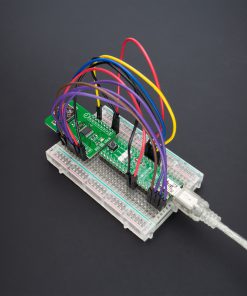RTC 12 Click
R515.00 ex. VAT
RTC 12 Click is a compact add-on board that measures the passage of time. This board features the DS1343, a low-current SPI-configurable real-time clock (RTC) from Analog Devices. This timekeeping device provides an extremely low standby current permitting longer life from a backup supply source. Its clock/calendar feature provides seconds, minutes, hours, day, date, month, and year information. The date at the end of the month is automatically adjusted for months with fewer than 31 days, including corrections for leap year. The clock operates in either 24-hour or 12-hour format with an AM/PM indicator. This Click board™ is suitable for portable applications, industrial and health-related time metering applications, and others requiring an accurate RTC for their operation.
RTC 12 Click is supported by a mikroSDK compliant library, which includes functions that simplify software development. This Click board™ comes as a fully tested product, ready to be used on a system equipped with the mikroBUS™ socket.
Stock: Lead-time applicable.
| 5+ | R489.25 |
| 10+ | R463.50 |
| 15+ | R437.75 |
| 20+ | R421.27 |



